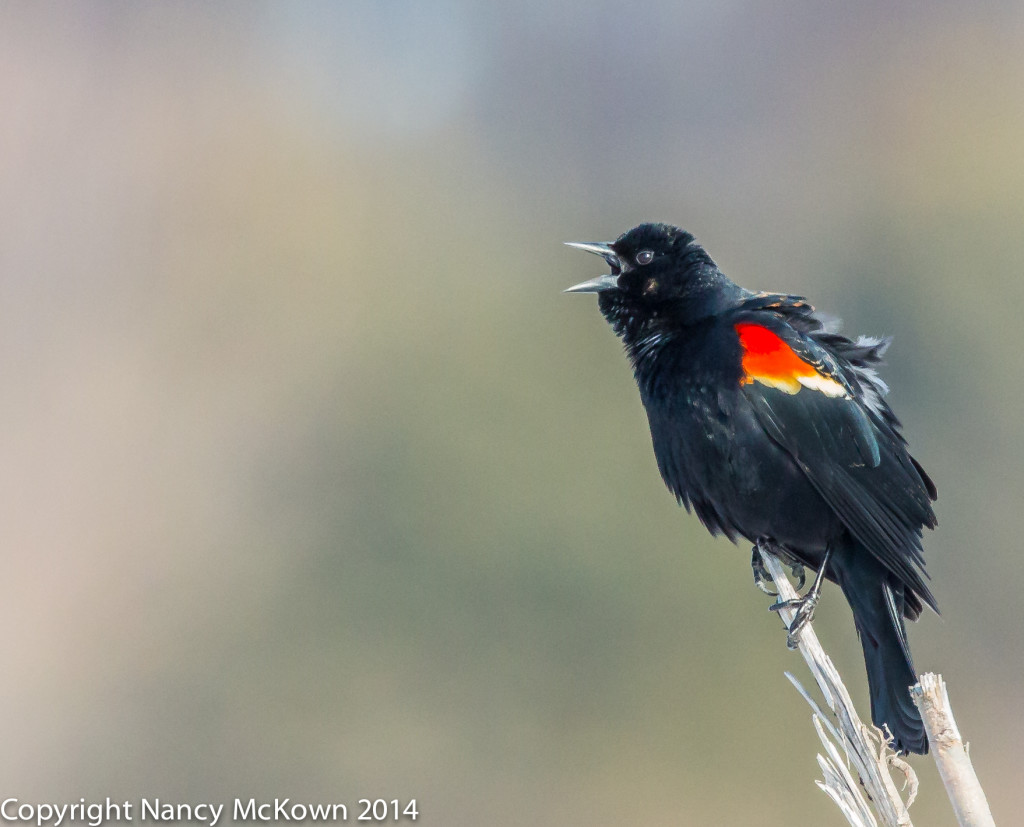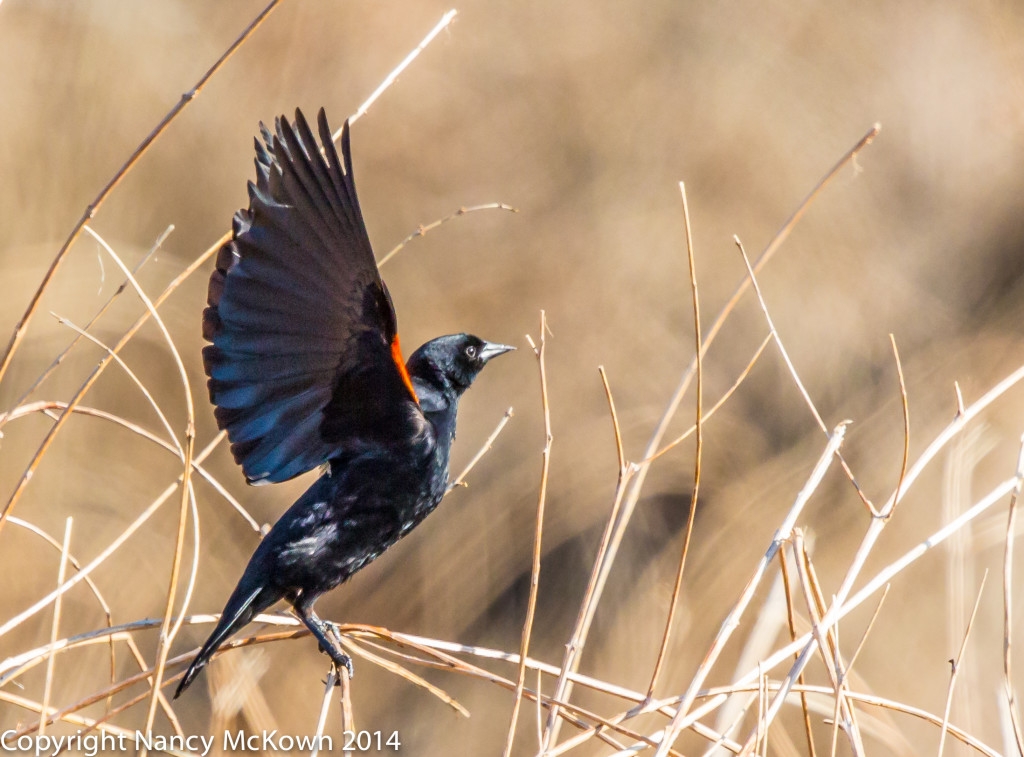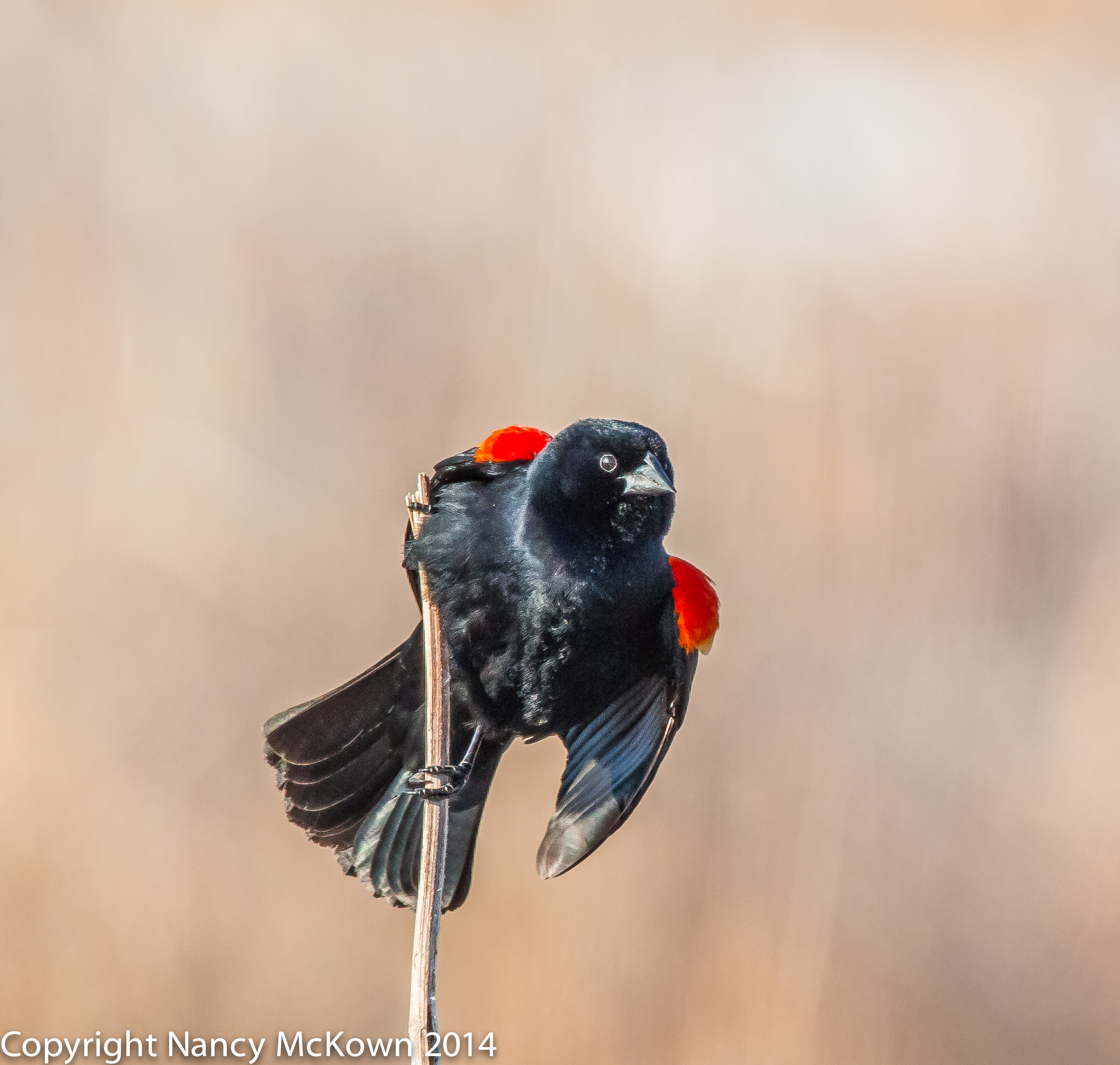Photographing Red Winged Blackbirds
I love listening to the red winged blackbirds in early Spring. Their songs give me hope and remind me that beginnings keep happening.
Red Winged Blackbirds can be seen everywhere, contorting their little bodies atop swaying grasses, tree stumps and sign posts to produce a mating song that’s loud and clear. The males of this species use their insistent songs and displays to threaten rivals, attract females, and carve out territories. The bright red and yellow badges on their shoulders (like epaulets) stand out against their iridescent black bodies. Red Winged Blackbirds are hard to miss in the Spring.
Image Composition
It’s a habit of mine to look through the viewfinder and frame the bird’s head and eyes at or near the center. It feels comfortable to set the camera so that auto focus and metering are taken at the center points. After all, I want the birds in my photographs to stand out.

ISO 2500; f/8.0; 1/2000 Second
But it’s not necessary for the bird to be the main feature of every photograph. You might want to spice up your bird photography occasionally by reframing the photo so your subject is not centered. Your eyes will still be drawn to the bird in the photo, but they will also take in other features that may add color and perspective.
Image composition is a visual language. (See more about image composition at this post.) It’s fun to experiment, especially if you think the larger scene with the bird over at the side or in the background is more provocative or tells a better story.

ISO 2000; f/8.0; 1/2500 Second
Reframe Your Image by Using Exposure Lock
Exposure Lock is a button on the back of the camera (labeled with an asterisk on the Canon) that allows the photographer to lock in the meter readings while the lens is comfortably centered on the subject. Once locked, you can move the camera anywhere to reframe the scene and take the photo with the previously locked in settings.

ISO 1000; f/9.0; 1/2000 second
NOTE: On Canon DSLRs, the exposure lock function can only be used when the camera is set to AV preferred, Tv preferred, or Program mode.
Quick Instructions to Lock Exposure and Recompose
Check that your camera is in AV, TV or Program Mode. I usually set the camera’s meter mode to spot metering or center metering and focus points to center area focus. (NOTE: For more information on spot metering, please visit this post.)
- Point the lens at your subject and half press the shutter button so the light meter in your camera can gauge the correct exposure reading of your subject. (NOTE: On my camera, half pressing the shutter also locks in auto focus.)
- While still half pressing the shutter, press and hold the exposure lock button on the back of the camera.
- Re-position (recompose) the camera (while exposure readings are in lockdown) to reframe the scene so that your subject is not centered. (NOTE: This is meant to be a quick solution, so try not to fiddle with other settings on the camera while holding down the exposure lock, otherwise, you may disengage the exposure lock. On the Canon, the “*” should appear in the viewfinder if exposure lock is still engaged.
- Take the shot. Once you release the shutter, the exposure lock should disengage from the previously saved settings.
Other Ways to Move Your Subject Off Center
One of the things I love about the art of photography is that there are so many ways to accomplish the same task. Of course, you can choose to take comfort by using the same equipment and the same go-to procedures. You can even let your camera’s computer do the thinking by putting it in Full Auto mode.
But where’s the fun in that?
Here is a quick list of other strategies you can use to move your subject off center.
- Reframe the shot in post processing.
- Set your camera’s focus points so the lens is focusing on the subject on the left or right, top or bottom…. but not focusing at center. (NOTE: While most DSLR cameras give you lots of options to move the focus points around, most cameras do not allow you to set the metering points off center.)
- Use M mode and set your exposure settings individually. They won’t change as you move the camera, so no need to lock down.
The Female Red Winged Blackbird
One last thing. The experts at WhatBird.com helped me identify the bird pictured below to be an adult female red winged blackbird. As you can see, the females are neither black nor red winged, though there is a touch of red on the shoulder. A pretty bird. The coloring is much more subtle than the flashy males.

ISO 800; f/9.0; 1/2000 Second










Just love their songs!
nice blog…nice birds. nice shots…
congratulations…
http://www.serkanmutan.com
Thank you